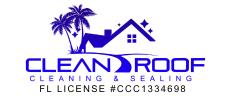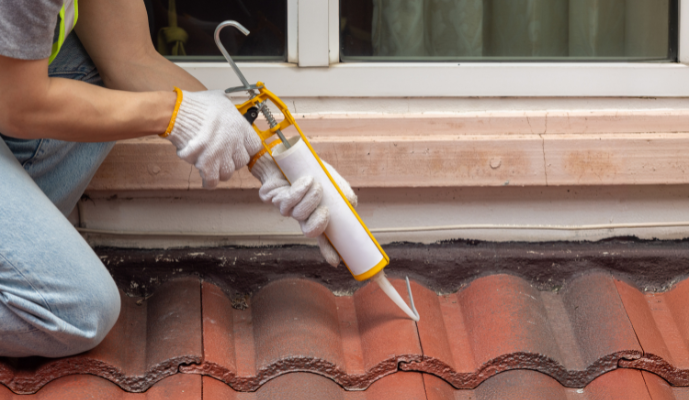Every homeowner knows that a roof is one of the most important investments in a property. It shields your family from the elements, enhances energy efficiency, and preserves the structural integrity of your home. Yet, many people overlook a simple but powerful method of extending roof life—applying a roof sealant at the right time. The question is not only whether to apply a sealant, but when. Timing makes all the difference because applying roof sealant at the right moment prevents water infiltration and extends roof life, delivering significant cost savings. Homeowners face escalating repair bills when small cracks go unsealed, yet a timely coating transforms maintenance from a crisis into a proactive defense. This comprehensive guide offers practical roof maintenance tips to help you understand the best moments for sealing and how they directly influence both repairs and long-term expenses.
What Is Roof Sealant and Why Is Timing Crucial?
Roof sealant is a protective coating applied across roofing surfaces to create a continuous barrier. This barrier blocks water intrusion, shields materials from UV degradation, and protects against temperature swings that cause expansion and contraction. Unlike quick patchwork, sealant strengthens the entire roof surface. Proper timing is crucial because adhesion and curing rely on weather conditions. If applied during unsuitable temperatures or humidity, the product may fail to bond, leaving gaps that compromise waterproofing. Because of this, choosing the correct moment for application ensures performance, saves money, and maximizes return on investment.
What Are the Key Benefits of Applying Roof Sealant on Time?
Timely sealant application turns maintenance into a planned defense instead of a rushed repair. Some primary benefits include:
-
Cost avoidance. Preventing leaks spares homeowners from costly structural replacements and constant patching.
-
Leak prevention. A continuous coating halts water intrusion, reducing the chance of mold growth or wood rot.
-
Roof longevity. Early attention extends service life and postpones full replacement by years.
Because the sealant acts as a protective skin, applying it at the right interval transforms roof care from reactive maintenance into preventive care. At the same time, it creates the foundation for energy efficiency, which we will explore later.
How Does Roof Sealant Protect Against Weather and Environmental Damage?
Sealant is like armor for your home. It deflects rain, snow, and strong sunlight. Reflective coatings reduce surface heat, lowering cooling costs in the summer. By forming a flexible, waterproof membrane, sealant strengthens roof resilience against storms and high winds. This is why roof maintenance tips always emphasize sealing as one of the best defenses against unpredictable weather. The combination of waterproofing and thermal protection results in greater comfort indoors and less money spent on utilities.
What Happens If You Delay Roof Sealant Application?
Waiting too long to apply sealant is a costly mistake. Cracks expand, shingles degrade faster, and hidden water damage seeps into insulation or wood framing. This leads to repairs that may cost five to ten times more than timely sealing. Moss and algae can also thrive in damp conditions when surfaces are unprotected, accelerating wear. Therefore, delaying application not only shortens roof life but also undermines energy efficiency by allowing more heat transfer. Acting proactively ensures that small issues never snowball into financial burdens.
When Is the Best Season to Apply Roof Sealant?
Seasonal timing determines how well sealant bonds and cures. Spring and fall often provide the most balanced conditions with moderate temperatures and lower humidity. Summer can be workable but requires monitoring to avoid excessive heat that causes flash curing. Winter presents the toughest challenge because cold, damp weather can prevent sealant from setting. Each season has pros and cons, but a careful look reveals why spring and fall are most often recommended.
Why Is Spring Ideal for Roof Sealant Application?
Spring provides moderate temperatures between 10 and 25 degrees Celsius. Humidity levels are often declining after winter, which helps with curing. Applying sealant in spring repairs damage from frost or ice dams while preparing the roof for the heat of summer. Imagine a homeowner applying roof sealant on a sunny day, surrounded by blooming flowers. This proactive step ensures that their roof faces the hottest months with maximum protection.
How Does Summer Weather Affect Roof Sealant Curing and Performance?
Summer speeds up curing, which can be beneficial if conditions are carefully monitored. However, extreme heat above 35 degrees Celsius may cause the sealant to cure too quickly. This reduces flexibility and can create small cracks over time. Choosing heat-reflective coatings improves energy performance in hot weather but requires patience in application. Therefore, while summer works in many cases, it demands extra caution to ensure proper bonding.
What Makes Fall the Optimal Time to Seal Your Roof?
Fall offers cool, steady conditions. Early autumn is perfect because the roof enters winter with fresh waterproofing in place. This reduces risks of freeze-thaw cycles and prevents ice damming. Fall also coincides with common maintenance tasks like cleaning gutters or inspecting shingles, making it a natural moment to seal. Applying in fall ensures a strong defense against winter storms.
Can You Apply Roof Sealant in Winter? When Is It Possible?
Winter is generally unfavorable because of moisture and freezing conditions. Still, limited emergency sealing is possible with rapid-set formulations or heated tents. For large-scale coatings, waiting until late winter or spring is safer. If temperatures remain above freezing and surfaces stay dry, small repairs can be carried out, but full sealing projects are better postponed.
How Do Weather Conditions and Climate Influence Roof Sealant Timing?
Every region brings different challenges. Coastal areas with salty air require corrosion-resistant coatings. Desert climates with extreme sun call for UV-stable formulas. Snow-heavy areas benefit from sealing in spring once the meltwater subsides. In all cases, humidity and temperature play central roles. The ideal range remains between 10 and 32 degrees Celsius with relative humidity under 70 percent. Staying within these limits ensures proper adhesion.
How Often Should You Seal Your Roof to Maximize Protection and Savings?
Reapplication schedules depend on materials, climate, and product type. Most homeowners should reapply every three to five years. High-performance silicone products can last up to seven years, while acrylic types may need refreshers sooner. Flat roofs that collect water require more frequent checks. Asphalt shingles benefit from reflective coatings every few years to prevent granule loss. By aligning sealing intervals with roof type, you guarantee maximum longevity.

What Is the Step-by-Step Process for Proper Roof Sealant Application?
Preparation is everything. The process usually includes:
– Cleaning the surface with brushes or low-pressure washing.
– Repairing cracks and damaged flashing.
– Applying primer under suitable conditions.
– Coating the roof with the first layer and allowing proper curing.
– Adding a second coat to reach full thickness.
– Inspecting the surface for weak points and performing touch-ups.
By following this order, you ensure the coating bonds properly and delivers long-lasting results.
Which Roof Sealant Types Are Best for Different Roofs and Conditions?
Sealant choice depends on needs:
-
Acrylic. Affordable and UV resistant, best for mild climates.
-
Silicone. Extremely elastic, perfect for heavy rain or ponding water.
-
Polyurethane. Durable against foot traffic, ideal for flat commercial systems.
-
Bituminous. Strong thermal stability, good for metal and flat roofs.
-
Liquid rubber. Flexible and self-healing, suitable for irregular surfaces.
Eco-friendly reflective coatings also reduce surface heat, cutting cooling bills and contributing to sustainable living.
When Should You Choose Professional Roof Sealant Services Over DIY?
Small repairs on low-slope roofs are manageable for handy homeowners. However, steep roofs, large buildings, or complex surfaces require professionals. Experts bring specialized tools, safety equipment, and product knowledge. They also understand local weather patterns, ensuring the job is done at the right time. Because of these advantages, professional services often save money in the long run by preventing costly mistakes.
How Does Timely Roof Sealant Application Save You Money?
Preventive sealing is far cheaper than reactive repairs. A study by Firestone Building Products and ProLogis found that proactive roof maintenance costs 14 cents per square foot annually compared to 25 cents for reactive work. More importantly, proactive sealing extended roof life from 13 to 21 years on average. Reflective coatings also lower cooling bills by up to 30 percent, producing additional annual savings.
Proactive Roof Maintenance as a Long-Term Investment
Applying sealant at the right time is not just about avoiding leaks. It is about maximizing return on investment. Reflective coatings reduce indoor heat, lower utility bills, and extend roof life by years. A case study in Arizona showed that reflective coatings cut cooling costs by 15 percent. Homeowners often save $200 to $400 annually in energy expenses, proving that preventive sealing pays for itself.
Final Thoughts on Timing and Roof Maintenance
Proactive roof sealing strengthens waterproofing, blocks UV rays, and supports energy efficiency. By aligning the application with weather and seasonal conditions, you reduce risks, prevent repairs, and save money. The difference between waiting too long and acting at the right moment can mean thousands saved in repair bills. Roof maintenance tips like timely sealing not only protect the home but also add peace of mind.
Roof Cleaning Services by Florida Clean Roof
In addition to sealant application, keeping a roof clean is a vital part of maintenance. Dirt, moss, and algae can weaken roofing materials and reduce the effectiveness of coatings. Florida Clean Roof specializes in professional roof cleaning services that prepare surfaces for sealing while improving curb appeal. Their thorough cleaning process enhances roof performance, extends material life, and ensures sealants adhere correctly.

